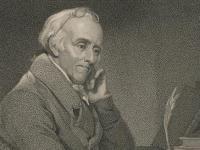With today’s technology, most students have probably heard about the outbreak of Ebola in Africa and the subsequent quarantine. Yet, many might not realize that Philadelphia had its own deadly outbreak in the form of Yellow Fever. In 1793 this disease killed roughly 5,000 people, or ten percent of the population, and it is estimated that about 17,000 fled the city.
Our new Unit Plan, Diagnosing and Treating Yellow Fever in Philadelphia, guides students through the treatment of Yellow Fever in 18th century Philadelphia by exploring the first-hand accounts of victims and their families. Using Dr. Benjamin Rush’s letter book, students are able to read case studies of select residents that describe, in detail, their symptoms and treatments. Generally students have a very hard time grasping Dr. Rush’s methods, of bloodletting and purging, with today’s technology of x-rays and MRI’s. This lesson will ask students to think critically and realize that there was no way for a doctor to look inside the body, therefore, many doctors believed the disease within had to be let out.
At the time of the outbreak Philadelphia was the center of economic, political, and cultural life in America. This disease managed to spread fear throughout the region as people wondered how the disease came to Philadelphia and how it could be stopped. Charting the signs, symptoms, treatment, and emotions of real Yellow Fever patients makes the topic much more relevant and applicable to life today. Students can understand the pitfalls stemming from a lack of modern medical knowledge as well as gain experience working with primary sources. This lesson also works well in conjunction with Laurie Halse Anderson’s book, Fever 1793 and provides ways to incorporate mathematical pratice with history.

